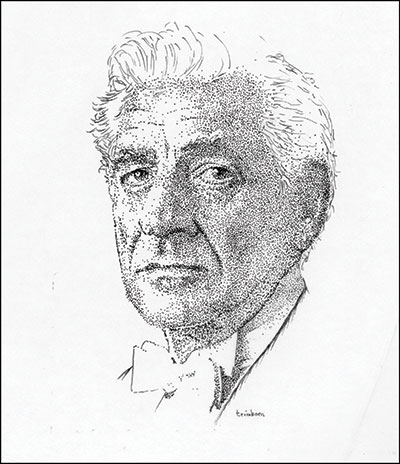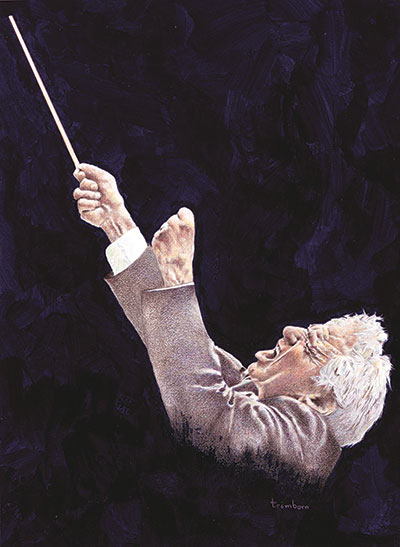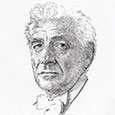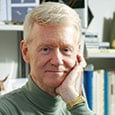This year marks the 100th anniversary of Leonard Bernstein’s birth. At his passing in 1990, he was unquestionably one of the most famous and accomplished musicians in the world. His legacy as conductor, composer, pianist, author, speaker, and educator made him worthy of being considered a truly complete musician.

Pen and ink stipple by the author, inspired by Richard Avedon’s photo.
The Role of Teacher
According to his daughter Jamie, her father cherished his role as a teacher the most. In that role – even from afar – he most certainly had that impact on me.
As a kid growing up in the 1950s and 1960s I was always interested in music. Early piano study led me to add trombone later. Like most households, we owned a television, and I certainly watched a variety of programs. Then, suddenly, along came the legendary televised Young People’s Concerts performed by the New York Philharmonic – conducted by the most fascinating and mesmerizing man I had ever seen. The way he talked about the music and moved on the podium was spellbinding. I was hooked.
I wanted to teach and conduct just like him. The CBS broadcasts began in 1962, first on Saturdays and then Sundays, and I didn’t miss one. Every program was a lesson. Bernstein showed how to expound and explain music in understandable language, pace the information in bite-size pieces for easy consumption, and convey an excitement and energy on the podium that looked like the music I was hearing. Then amazingly I learned that Leonard Bernstein and the entire orchestra were scheduled to perform in my home town – Milwaukee, Wisconsin. I couldn’t believe it was true.
On the afternoon of September 6, 1963, I dragged my entire family out to Gen. Billy Mitchell Field to see the orchestra arrive. The first of three chartered DC-7s touched down at 3:15 p.m., the ramp went up and out streamed the musicians blinking at the bright sun, reaching for sunglasses and straightening themselves after the four-hour trip from Denver. Then the second airliner touched down moments later and there he was – Leonard Bernstein – first one down the ramp looking grayer, shorter, and more handsome than he did on television. Talk about charisma! He warmly greeted the waiting reception committee members including those from the Schlitz Brewing Co., sponsors of the evening concert in Washington Park. Next he embraced his assistant conductor, Seiji Ozawa. From my vantage point in the terminal, the whole scene looked like the arrival of a head of state.
The open-air concert at the Temple of Music was incredible, drawing an audience of 30,000 people. The excitement was palpable, the performance amazing. The Mendelsohn Italian Symphony, the Stravinsky Firebird Suite, and the Beethoven Fifth Symphony, topped off with a rousing Berlioz Roman Carnival Overture for an encore. The program taught me an invaluable Bernstein lesson. Great music and great programming both had to have life and excitement – something I never forgot.
My Lesson from LB
Fast forward a decade. Imagine a young band director (me) acquiring the Symphonic Dances from West Side Story orchestral score and arranging the Somewhere portion for his high school band to play in an upcoming concert. It was an ambitious project (if not a copyright violation), but there is more to this story. Before the performance I sent the score to the composer for review – surely audacious on my part. Not expecting a response, not only did I get one from his secretary, Helen Coates, but also a handwritten critique from the Maestro himself in my score. He also wrote a separate formal letter to the band. The students were thrilled with the letters and as for me, Bernstein wrote in the score, “Very nicely done and professional [although] why not add a rhythmic beat (as in the original) at letter A and again at C? Best – LB.” I followed his advice. So, I can attest to receiving a lesson from Leonard Bernstein. After all these years, a page of the framed score and the letters hang on my home office wall as cherished mementos.
.jpg)
.jpg)
-High-School-Band.jpg)
Letters from Bernstein to Trimborn and his students.
Teacher/Professor
Leonard Bernstein was active in three major areas of music education: as a teacher of conducting, especially for almost 40 years at Tanglewood (the summer home of the Boston Symphony Orchestra), as a university professor at Brandeis and Indiana Universities, and as a multimedia teacher of music awareness, appreciation, and listening on the Omnibus and Young People’s Concerts television programs.
Learning from the Maestro
Bernstein continues to serve as a model of teaching. While his talent may not be reproducible, aspects of his methods are, and remind us of their possible application in our rehearsals and classrooms. Overall the Maestro loved people – children in particular. He was a music enthusiast, something that was never diluted or hidden. He wore music on his sleeve that said “I am music!” He was a master communicator who used vocabulary that was easy for the young and uninformed to understand, while at the same time sophisticated and insightful for professionals to ponder. Although Leonard Bernstein did not take formal education courses, he was instinctively a teacher’s teacher providing exquisite models of teaching principles.

Bernstein Teaching/Learning Principles
The following principles were all learned from watching and listening to Leonard Bernstein.
Rehearsals (like his broadcasts) must begin right away by diving directly into the subject.
Divide complex topics into meaningful parts, building small to large concepts to ensure understanding.
Lessons should progress from simple to complex using all genres of musical examples along the way.
Use language with colorful analogies and metaphors to clarify complicated issues.
Answer questions in stages.
Progress from the known to the unknown.
Both teacher and students sing to enhance learning and motivation.
Conductors should look like the music – physically characterize the score while on the podium.
A Parting Afterthought
It seems everywhere we turn, we are told to specialize. However, Bernstein’s example reminds us of the richness of possibility, the bounty of multiplicity. He did so many things so well that people were always upset with him. “You’re a great classical composer, why waste your time on Broadway?” Would we want to choose between West Side Story and the Chichester Psalms? Bernstein – as conductor, composer, activist, writer, and teacher – gave of himself, without narrowing his focus. How rich we are, but especially as educators, for that refusal to specialize.
Notes/Credits
The Philharmonic transcontinental tour heralding the New York World’s Fair included the concert in Milwaukee. The tour began at the Hollywood Bowl and proceeded to Denver, Milwaukee, Chicago, Detroit, Pittsburgh, Reading, and Baltimore, ending at Constitution Hall in Washington, D.C. (August 29-September 22, 1963)
The Bernstein at 100 celebration reminds us of the wealth of resources available to help tell his story and assist in bringing the joy of music to everyone, especially children. Visit leonardbernstein.com to learn about available recordings, books, videos, scores, and events. Through a multitude of means, Leonard Bernstein continues to inspire and allows all of us to receive lessons from a master.






